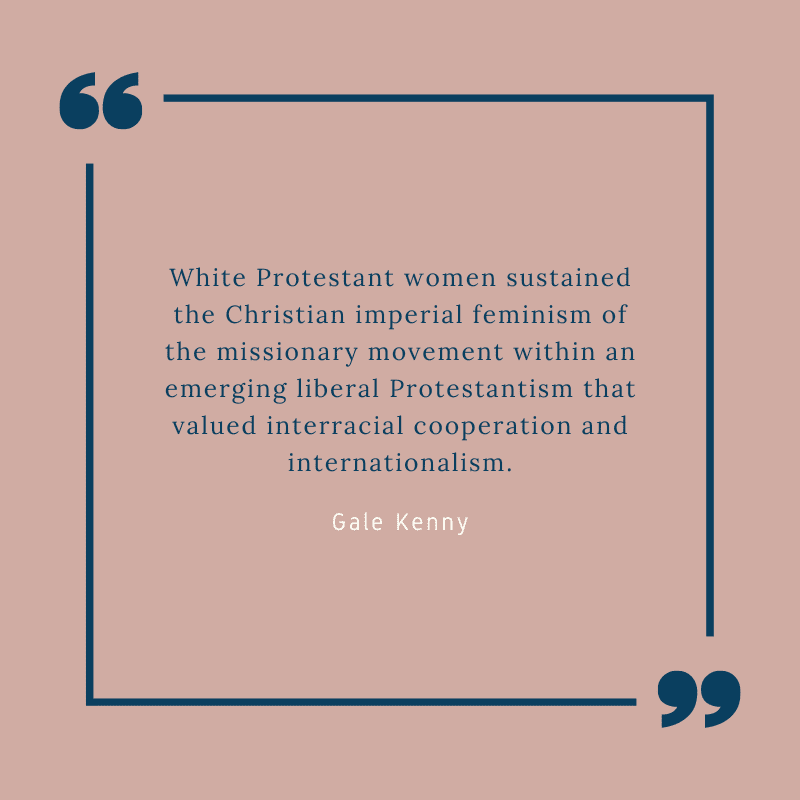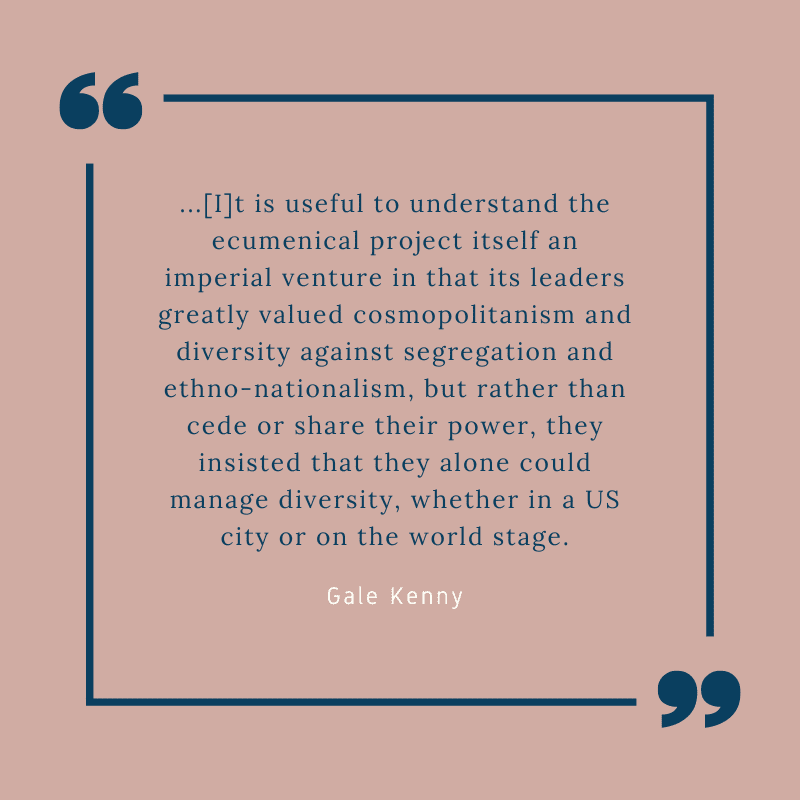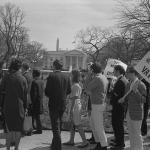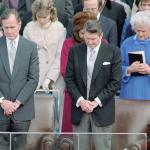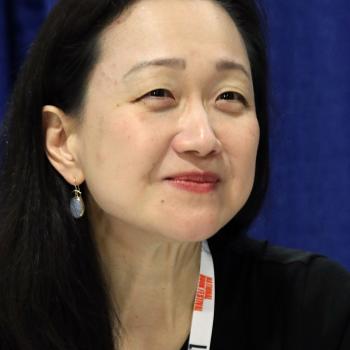In recent years, the role of Christianity in the development of American empire has received significant attention from both observers of current events and scholars of United States history. Books such as Christian Imperialism by Emily Conroy-Krutz and Religion and U.S. Empire, a collection of essays edited by Tisa Wenger and Sylvester Johnson, reveal the complex ways that Christian beliefs, practices, individuals, and institutions have supported the expansion of American power abroad. And, as scholars like Kathryn Gin Lum and others have argued, the significance of Christianity in American imperial ambitions has been particularly potent when ideas about religion overlap with notions of race and nation.
But what about gender? Specifically, how have Christian women and feminism contributed to American empire? In her much-anticipated book, Christian Imperial Feminism, historian Gale Kenny explores how “how white American Protestant women embraced a racially specific version of social inclusiveness that centered themselves as the norm.” Kenny tells the story of how these women pursued liberal goals—racial integration and women’s advancement, for example—but nevertheless insisted on a hierarchical world, one with the United States, Christianity, and whiteness at the top and white Christian women as its stewards.
I had the good fortune of interviewing Kenny about her book, which was published by New York University Press earlier this month.
Melissa Borja: Tell me the story behind your book. How did you come to write on this topic?
Gale Kenny: I initially wanted to explore the relationship between missionaries and humanitarianism in the US. I had written a few things about New England missionaries and the American Colonization Society in the early 1800s. Through this research, I learned about a White twentieth-century missionary couple (Emory and Myrta Ross) whose careers tracked from a Disciples of Christ industrial school in Mississippi to missionary work in Liberia and Congo to working for both ecumenical missionary and philanthropic organizations in the 1940s-1960s. As I worked my way through their archives, I became even more interested in Myrta Ross’s role as she became involved in the Federal Council of Churches’ Department of Race Relations and as a founder of the United Council of Church Women (now known as Church Women United) in 1941.
I had read a lot about the male-led ecumenical institutions and liberal Protestant theology in the interwar era, but Myrta’s files left me wanting to know more about Protestant women’s organizations about which I knew little. What happened to the many thousands of women who participated in and supported their local church missionary societies? What work did the ecumenical councils of churchwomen formed in the 1920s actually do? Building on the scholarship of Dana Robert, Bettye Collier-Thomas, Virginia Brereton, and, most recently, Peggy Bendroth, I set out to rethink the way we understood the ecumenical movement through a focus on the afterlives of missionary women.
My fascination with women’s organizations in the early twentieth century was also influenced by my experiences teaching at a women’s college where the complicated legacies of White liberal feminism (both first and second wave) regularly arise in class and in the institutional structures. While US women’s historians rarely focus on religion within twentieth-century feminist movements, I hoped to show how an underlying Protestantism informed even self-proclaimed secular feminists.
MB: What do you argue in this book?
GK: Most broadly, the book argues that White Protestant women sustained the Christian imperial feminism of the missionary movement within an emerging liberal Protestantism that valued interracial cooperation and internationalism. Rather than examining the small percentage women who worked as missionaries, I decided to instead focus on the programs and activities aimed at ordinary and mostly middle-class churchgoing women. Practices like mission study classes, prayer services, costumed pageants depicting scenes of conversion and women’s liberation, and even political activism instructed White church women in a missionary view of the world and cultivated a sensibility of Christian imperial feminism. These practices were also not limited to church as Protestant women helped shape larger civic initiatives in their cities and town from running “Americanization” programs aimed at recent immigrants to participating in interfaith and interracial councils. In the 1920s-1930s, churchwomen eyed the diversity of their local communities as a microcosm of the world, and they saw a continuum between foreign missionary work and their own cities and towns.
Even as ecumenical churchwomen’s councils replaced missionary societies at the local level and, nationally, the continuity of gendered missionary practices worked to maintain White women’s sense of their duty to oversee and manage processes of racial inclusion and diversity. By the 1930s and 1940s, ecumenical White churchwomen had revised an older Protestant gender ideology of domesticity centered on protecting sexual purity to instead see White women as innately capable of and morally obligated to resolving racial discrimination, religious bigotry, and putting an end to war.
While I primarily examine how White Protestant women maintained their power even as they pledged their commitment to racial diversity, I also show how Black churchwomen in the US and Protestant women abroad mobilized a Christian feminist counter-discourse of sorts to challenge and sometimes persuade their White colleagues. For example, when White-led churchwomen’s councils opened the doors to Black women in the 1920s, Black women used the opportunity to urge White women to support critical issues like anti-lynching laws, domestic workers’ rights, police brutality, and civil rights more generally. These efforts had mixed results in the period I discuss in the book. When the United Council of Church Women came into being in December 1941, only one of the organization’s thirteen officers was Black (Christine Smith). But within a couple of decades, Black women would come to play a much larger role as leaders and members of Church Women United.
MB: Tell us about the different scholarly interventions you hope to make through this book. Specifically, how does this book help us think about Christianity in a new way? And American empire? And the history of women and feminism?
GK: I hope that Christian Imperial Feminism provides a complicated view of ecumenical Protestantism by highlighting the continuities with the past, in this case, the nineteenth-century White women’s missionary movement. Historians of ecumenical Protestants have emphasized their racial liberalism and anticolonialism, often in contrast to more conservative White Protestants. Yet this analysis can also minimize the persistence of hierarchies of race and religion that designated racialized and non-Christian people as lagging behind. In the book, I also argue that it is useful to understand the ecumenical project itself an imperial venture in that its leaders greatly valued cosmopolitanism and diversity against segregation and ethno-nationalism, but rather than cede or share their power, they insisted that they alone could manage diversity, whether in a US city or on the world stage.
By focusing on Protestant women, I hope that the book shows how important women were to spreading ecumenicalism and its ideals of interracial and international cooperation. While almost no organized churchwomen worked as ministers, seminary professors, or consultants to politicians and policymakers, their practices of mission study, pageants, and prayer services and even things like the protocol for interracial committee meetings made liberal values of tolerance, cooperation, and multiculturalism into moral norms for White middle-class Protestants.
While few churchwomen left personal archives, their organizational records of local groups and Church Women United are vast, and I was only able to scratch the surface! I hope that other scholars will continue to explore the gendered dimensions of liberal Protestantism to understand how White and Black Protestant women exercised social power and influence within but usually beyond what we tend to think of as the secular “woman’s movement.”
MB: What project do you have coming up next?
GK: I am shifting gears to write about a woman who was a source of frustration to Protestant missionary woman – the Theosophist Katherine Tingley, also known as the “Purple Mother of Lomaland.” Tingley is an intriguing figure who became the leader of a branch of the Theosophical Society in the 1890s and who then set up a commune of sorts on the Point Loma peninsula near San Diego. She was a proponent of US imperial conquests during the 1898 war and subsequently established a theosophical mission in US-occupied Cuba. She also had frequent legal entanglements that tested the boundaries of religious freedom in the US. I’m interested in the intersections of the occult, spirituality, race, and empire in Tingley’s Universal Brotherhood Organization and what this means for our conceptions of liberal spirituality and race more generally.



